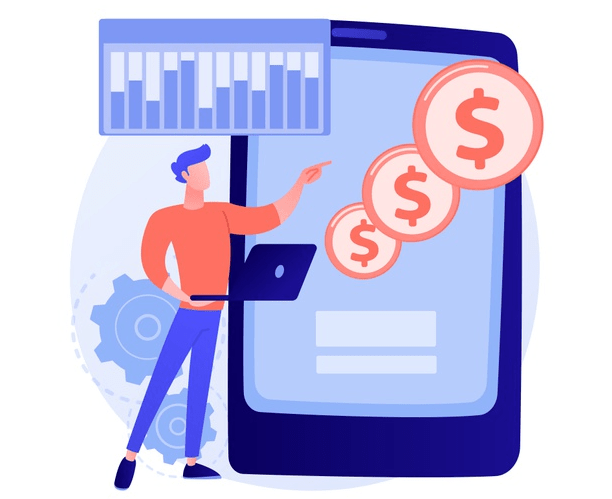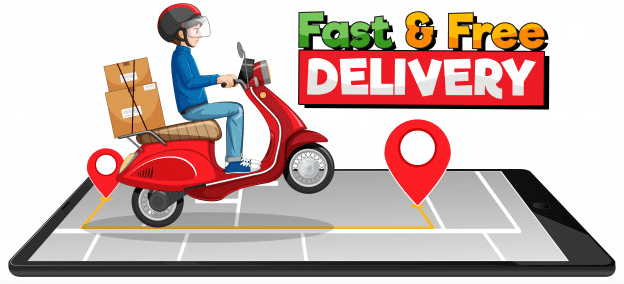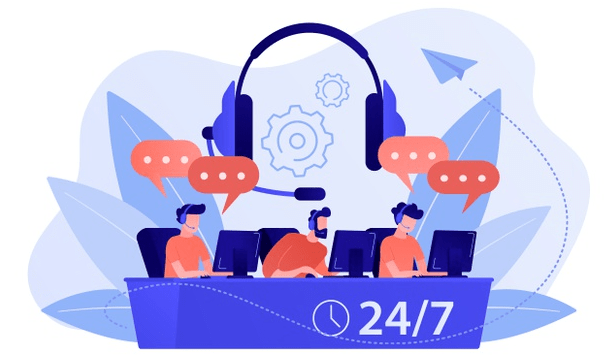7 Simple Ways to Stay Ahead of Your Competition in Ecommerce

Irene Wanja | Feb 09, 2021
Reading Time: 8 minutesThe dramatic changes in the ecommerce world over recent years have built competitive momentum as multiple businesses carry similar products in their stores.
More than ever, each business needs to find ways to capture the attention of customers and ensure that they, not their competitors, get the sale.
What do ecom businesses need to do to stay ahead of their competitors?
Here are seven simple yet powerful methods you can employ.

1. Define Your Unique Value Proposition
To stand out from the competition, owners need first to define their ecommerce business’ unique value proposition (UVP)—the qualities that separate it from the competition. Having defined what is unique about the business, they then need to communicate that to their customers.
Your company’s UVP is what makes your brand special, the reason customers want to buy from you, and why they want to associate with your brand and not another. This reason should be packaged and positioned so that all of your visitors see it and understand why they should buy from you, regardless of the page they first land on in your store.

- Product quality UVP: An ecommerce brand must clearly communicate to its customers the quality of the product it’s selling. Let the customers understand if your product is more durable, more comfortable, and if the material used to make the product is organic? Is it made locally? Is it sourced internationally? Is the manufacturing of your product free from animal cruelty?
- Product specifications UVP: If your product has other features that are better than your competitors’ product, you need to inform customers. Help them understand that the way your product is built makes it easier to use (in comparison to your competitors’ product), that yours has been invented or improved in ways that take into account customer feedback on your competitors’ as well as on your own product and the ways customers want to use that product.
- Product benefits UVP: Let your customers understand the additional (or superior) benefits your product offers as compared to your competitors’ product. Does your product have a longer battery life, a larger storage capacity for less cost, better eye protection, or is it adaptable for use with many devices.
- Your motive as UVP: If your product UVP is the motive behind your product, your brand needs to communicate that. For example, let customers know that you are selling your product to create awareness or, in whole or in part, to support a charitable cause.
2. Define Your Ecommerce Business Strategy
For an ecommerce business to stay ahead of the competition, you need to develop an effective business strategy that supports the growth of the business. You also want to attract the attention of—and maintain good relationships with—customers. This requires development of the following:
- An effective marketing strategy: Define channels to communicate about and market your product such as email marketing, in a way that shows how you’d like current and potential customers to envision the business.
- An effective communication strategy: Develop the type of message that triggers emotions when your customers read the content you create for your products.
- An effective way of doing business: Communicate in a positive way with customers if there’s a problem with an order, to correct a mistake made, and to process returns or refunds.
3. Employ Competitive Pricing

There are anywhere from 12 to 24 million ecommerce stores in the world. That’s fierce competition, and your pricing is going to be important.
But pricing your products is not an exact science, nor is it an art form. It’s dynamic—it will change—and it depends on a number of things, like the market price and competitive pricing.
Here are some competitive pricing strategies for your products that you can start using right away.
Know your competition
Whether you’re a new business or a well-established one, competitive research is invaluable. You need to know what your competitors’ prices are.
It’s very important to know your online competition because people can go online to shop for anything these days. If you’ve defined your UVP, you can use the knowledge of what sets you apart from the competition to help you develop your pricing strategy.
And since people also like to shop at brick-and-mortar stores, check those prices too so you know how to adjust your prices accordingly. It involves more than simply adjusting your price to match the price found elsewhere. Comparing the quality of your product to those available elsewhere helps you determine whether to price lower, at about the same price, or higher.
In addition to knowing about your local competition,
So consider if you want to be known for having the lowest price or for offering the best quality (but maybe at a higher price).
Evaluate your costs
You need to figure out what your costs are in order to know how much you need to charge for your product to make a profit.
These are the two main types of costs to consider. Per Investopedia:
- Fixed costs are those that don’t change—such as baseline costs like your ecom store’s monthly charges (e.g., Shopify Basic cost of $29 per month)—no matter how much product you make.
- Variable costs are ones that change based on how much you produce–such as materials.
Consider other factors
The price you charge your customers should be sensitive to other factors. For example, the seasonality of your product may have an impact as will the demand in the market and the nature of competition. If you sell products that are used at different times of the year, such as mosquito netting, you know that it sells in large quantities in summer but doesn’t sell as well in winter. That means that you may need to adjust prices downward in the winter to encourage people to buy that netting for later use.
Choose when to evaluate prices
To determine how you adjust prices over a period of time, set scheduled times to review and update your pricing strategies. For example, you can plan to evaluate prices once a year. And/or you can review your prices at irregular intervals when you notice changes in the economy, changes in competitors’ prices, or a change in the market where the product you sell is in high demand.
4. Reward Your Customers

Customer loyalty is what keeps your customers coming back. So let’s talk about what it takes to engage those customers with loyalty programs. There are many different types of such programs that you can implement in your business:
- A points program: This requires setting up a points system where your customers earn points with their purchases. Once your customers have accumulated a reasonable number of points, they can redeem them when making purchases, reducing the amount of money they are expecting to spend on a given order.
- A referral-based program: With a referral-based program, you reward customers with coupons. You can set clear guidelines that your customers understand, such as, “For every customer you refer, you will receive a 5 percent discount on your next order,” so that customers who participate in the program understand how it works.
- Daily specials: Ecom store owners also use the daily specials strategy, using text or emails to communicate the products they have on daily specials. Giving your customers something to look forward to every day is a great way to keep your customers coming back.
- Discounts and coupon codes: You can also define a discount system for your business. You can reward customers with free shipping when they spend a certain amount of money on an order or give them a percentage discount when they participate in a survey and give you feedback about your business.
5. Maintain Speedy Order Fulfillment

An ecommerce store owner must strive to delight customers, and one great way to achieve this is with a speedy fulfillment time. The faster you deliver your items and meet customer expectations without error, the happier your customers will be.
The reverse can also be true. Let’s say you sell a product in your store, but it takes 10 to 20 days to deliver it to your customer. If the product is available in local stores, many customers are likely to buy the product locally because they’ll receive it the same day.
For this reason, it’s important for ecommerce store owners to find faster shipping solutions to deliver products in a timely manner. They should ensure a balance of estimated times of delivery by offering multiple shipping methods so that customers can adjust their delivery times to overnight delivery (expensive), standard shipping (moderate rates), or paid shipping (costly but not as much as overnight delivery). Having options also gives customers a sense of control over the process, which can be appealing.
6. Provide Exceptional Customer Support

If you want to build a great business, then you need to provide exceptional service to your customers. Understand that they are the epicenter of your business because they are the people who keep you in business.
By focusing on your customers, you let them know that you recognize and appreciate them. This helps you build a good rapport with them, and that’s the foundation of all successful relationships. It makes your customers remember you and can lead to more word-of-mouth referrals.
Understanding your customers helps you make better decisions about giving your customers what they want (rather than what your competitors may be giving them). You will also discover more opportunities that can benefit your business and lead to better communication. Offering the best customer support also boosts your ecommerce store revenue.
7. Stay Current on Trends and Updates

You need to understand the latest trends and technologies as well as how to structure your ecommerce business to keep up with those trends such as the latest email and sms marketing trends in 2023.
One way to find out what’s trending is to survey changes other ecommerce brands are making to their stores. You don’t want to look the same as your competitor, but you do want your store to look fresh and current. For example, if your competitors are using augmented reality in their stores, and you can tell from the reviews they’re receiving that customers like shopping with them because of this feature, then you need to incorporate this feature in your store because the market is demanding it.
Customers also like to shop with up-to-date technology. If they don’t find that in your store, they may not feel confident enough to buy from you or give you their payment details.
Ecommerce store owners should also use the data collected from customers to gain insights and learn from customers. You need to understand and capture important data that will help users interact on different channels and build better, deeper connections.
Conclusion
Develop and maintain a clear vision of what you want your business to achieve. If you do that and follow the suggestions above, there’s a very good chance you’ll beat the competition and be successful in the ecommerce niche you’ve chosen.
Resources
Nickolas, S. (2020). Variable cost vs. fixed cost: What’s the difference? Investopedia.



Table of Contents
1. Define Your Unique Value Proposition2. Define Your Ecommerce Business Strategy3. Employ Competitive PricingKnow your competitionEvaluate your costsConsider other factorsChoose when to evaluate prices4. Reward Your Customers5. Maintain Speedy Order Fulfillment6. Provide Exceptional Customer Support7. Stay Current on Trends and UpdatesConclusionResourcesTable of ContentsAbout the authorLeave a Comment Cancel ReplyAbout the author
Irene Wanja
Irene, a skilled Revenue Optimization Specialist for Build Grow Scale, combines an unparalleled focus on user research and a deep understanding of the ecommerce customer journey to orchestrate optimal shopping experiences. With an uncanny knack for detecting and addressing customer pain points through meticulous user testing, she utilizes tools such as moderated user tests, heatmaps, scrollmaps, and clickmaps to fast-track improvements in user experience and usability. Her keen eye for detail aids in swiftly spotting potential issues and implementing solutions, all while working closely with store owners and applying her intricate comprehension of user interactions. Passionate about software and technology, Irene immerses herself in enhancing her clients' business clarity, efficiency, and user satisfaction. Even though the value of user experience doesn't conform to a conventional numerical scale, the tangible outcomes of her work—improved user experience, amplified retention rates, and reduced customer support issues—are testaments to her prowess. Beyond her revenue optimization skills, Irene is a skilled writer and copywriter. She weaves her profound insights into engaging prose, crafting content that not only resonates with diverse audiences but also demystifies the complexities of user experience, consequently benefitting businesses worldwide.



